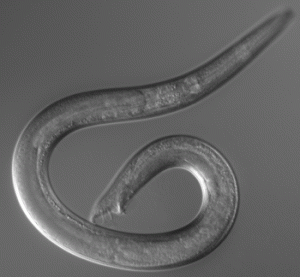Want to reverse engineer the brain? Reverse engineer the roundworm first…

Share
From the IEEE report on the singularity I found an interesting piece of information from the article titled "Can Can Machines Be Conscious?" by Christof Koch and Giulio Tononi. It would seem mankind's attempt to reverse engineer the brain is quite a ways off if we can't even reverse engineer the 302 neuron roundworm! From the article:
"What is the best way to build a conscious machine? Two complementary strategies come to mind: either copying the mammalian brain or evolving a machine. Research groups worldwide are already pursuing both strategies, though not necessarily with the explicit goal of creating machine consciousness.
Though both of us work with detailed biophysical computer simulations of the cortex, we are not optimistic that modeling the brain will provide the insights needed to construct a conscious machine in the next few decades. Consider this sobering lesson: the roundworm Caenorhabditis elegans is a tiny creature whose brain has 302 nerve cells. Back in 1986, scientists used electron microscopy to painstakingly map its roughly 6000 chemical synapses and its complete wiring diagram. Yet more than two decades later, there is still no working model of how this minimal nervous system functions.
Now scale that up to a human brain with its 100 billion or so neurons and a couple hundred trillion synapses. Tracing all those synapses one by one is close to impossible, and it is not even clear whether it would be particularly useful, because the brain is astoundingly plastic, and the connection strengths of synapses are in constant flux. Simulating such a gigantic neural network model in the hope of seeing consciousness emerge, with millions of parameters whose values are only vaguely known, will not happen in the foreseeable future.
A more plausible alternative is to start with a suitably abstracted mammal-like architecture and evolve it into a conscious entity."
Be Part of the Future
Sign up to receive top stories about groundbreaking technologies and visionary thinkers from SingularityHub.


picture of c. elegans from newsdesk
Related Articles

Study: AI Chatbots Choose Friends Just Like Humans Do

AI Companies Are Betting Billions on AI Scaling Laws. Will Their Wager Pay Off?

Are Animals and AI Conscious? Scientists Devise New Theories for How to Test This
What we’re reading

